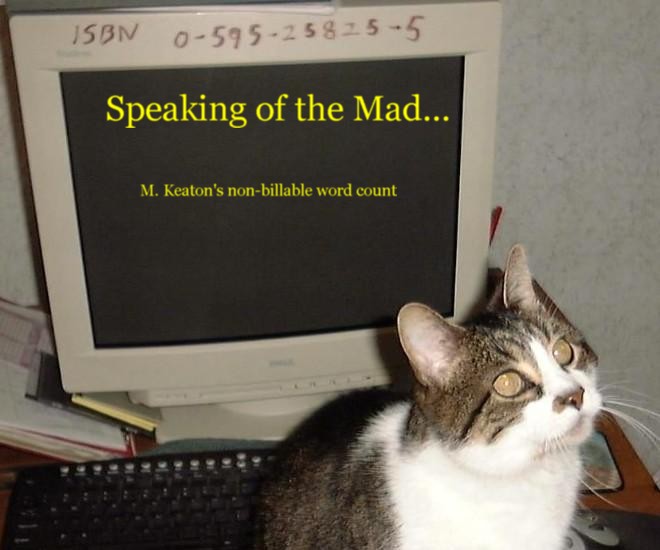I finally mewed at the Thin Man until he agreed to explain, at least in brief, his philosophy of the soul and why animals do go to heaven. Because it is pedantic and of little interest to the reader (in his opinion) he wants me to spread it out (I’m thinking of instituting ‘TheoTuesdays’ like the current ‘ConspiriThursday’) and he insists on the following disclaimer:
There are public theologies and private thoughts. Likewise, there are core, vital doctrines and then there are those speculations that are not truly relevant in the grand scheme of Salvation. This is a private speculation based largely on two foundations: the fact that it seems intuitively correct and does not contradict anything extant in the Holy Writ; and a reasoned extension of the already-displayed character and consistency of God documented in the Holy Writ. These are one man’s thoughts in the long hours of the night and should not be considered in any way worthwhile doctrine or even subjects of debate (except, perhaps, where the reader may find the Holy Ghost prompting within—and at that point it is an issue between God and the reader).
Photographs steal part of your soul. You know it, I know it, tribal groups throughout history have known it. You want to pretend that you’re sophisticated and modern and that it’s all just primitive superstition but, deep down, we all know better. Still, I’ll spell it out just to drive home the point.
When I speak of a photograph, I am actually referring to a much larger body of work and art—photographs, portraits, letters, books, sculpture—in essence, I am referring to any work from or depiction of an individual that calls to the mind of another that individual, and any emotion or knowledge of that individual. Put more simply, I’m talking about symbols, any symbol that represents an individual. When you read a letter from a relative, it is symbolic of that relative, calling them to your mind. When you see a picture of someone, you are seeing a symbol of that individual. Obviously, there is more to a person than a simple picture or letter can present but, through the symbol, the entirety of that person and what you know of them is summoned up within the mind of the viewer. Further still, even viewing a picture or reading a letter from a person you’ve never met will still bring to your mind an impression of that person. It may be an incorrect impression but, strangely enough, humans seem highly adept at discerning the nature and character of an individual even from something as distant and impersonal as a photograph. How can this be? We take it for granted as if it were a simple thing rather than the great wonder that it is.
It has been said that language is what separates man from the animals, the greatest of his gifts and tools. And what is language but the use of symbols to represent larger concepts from mind to mind? Words carry connotations as well as definitions and, in context, carry even more meaning. Words are only part of language. Indeed, the entirety of what most people define as language barely scratches the surface. Language is the sum total of communication from one individual, isolated within his own mind, to another individual, isolated within their own mind. All of the arts are language, from paintings to novels to sculptures and the buildings designed and built by the hands of men and the plowed fields of the farmer waving with grain. Every stamp, every mark, every temporary change upon the physical world is communication, language from one lonely soul to another through the only medium available—physical reality. Photographs, then, are languages, sentences and speeches made with actions rather than words.
Again we return to the basic question: How? How can language carry such power? It is true magic and a mystery. More to the point, though, it works because, within this language, be it words or pictures, lies trapped a portion of the subject’s soul. There is no other reasonable explanation (although this is only part of the explanation, not the totality of it).
The query that logically follows is why we allow the practice and why we willingly engage in it. The answer is deceptively simple. Why would we assume that having a portion of your soul captured and shared by someone else is a bad thing? Certainly it can be and, as an author, I certainly understand the risks and fears of laying heart and soul bare for the inspection of strangers through my writing; but, perhaps, it is not always bad.
Why?
Reality is not a zero-sum game.
Tuesday, June 16, 2009
Subscribe to:
Comments (Atom)




















